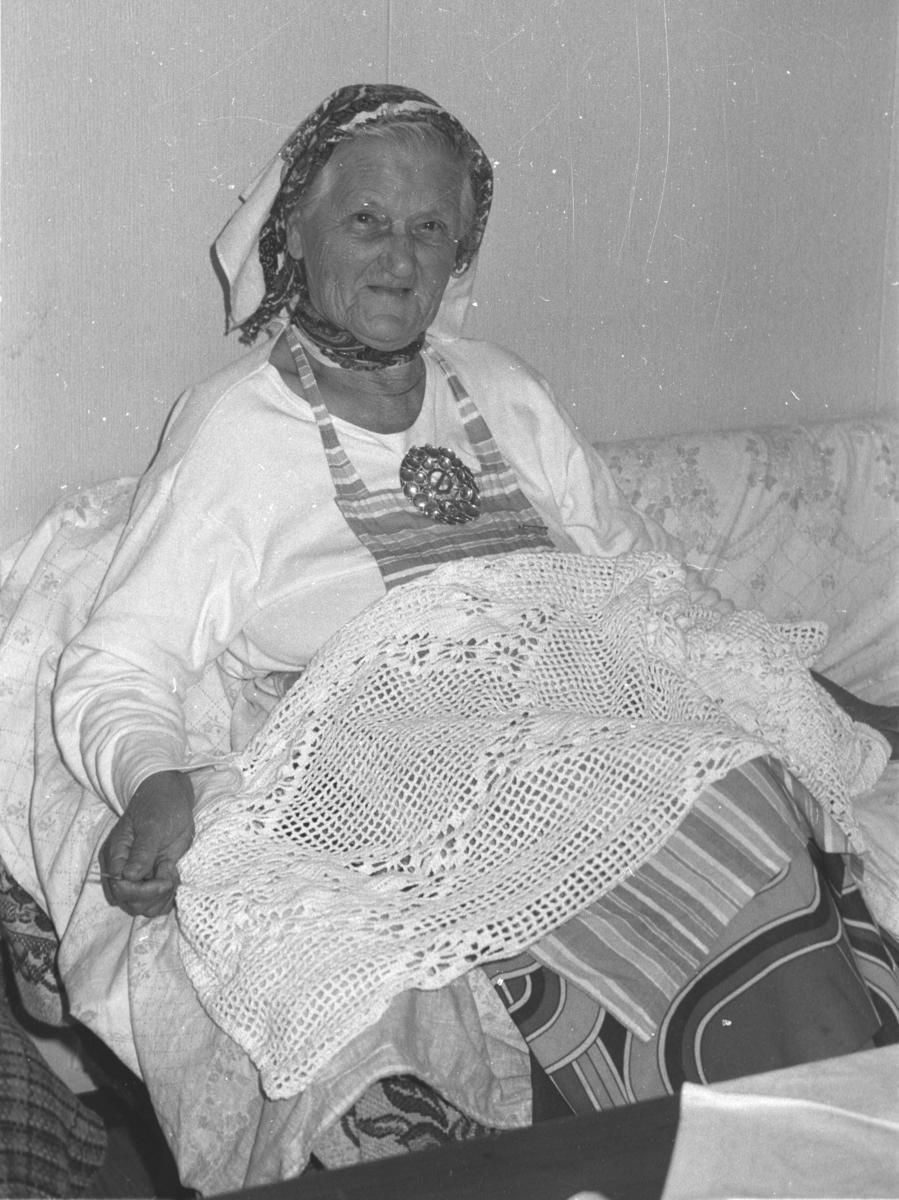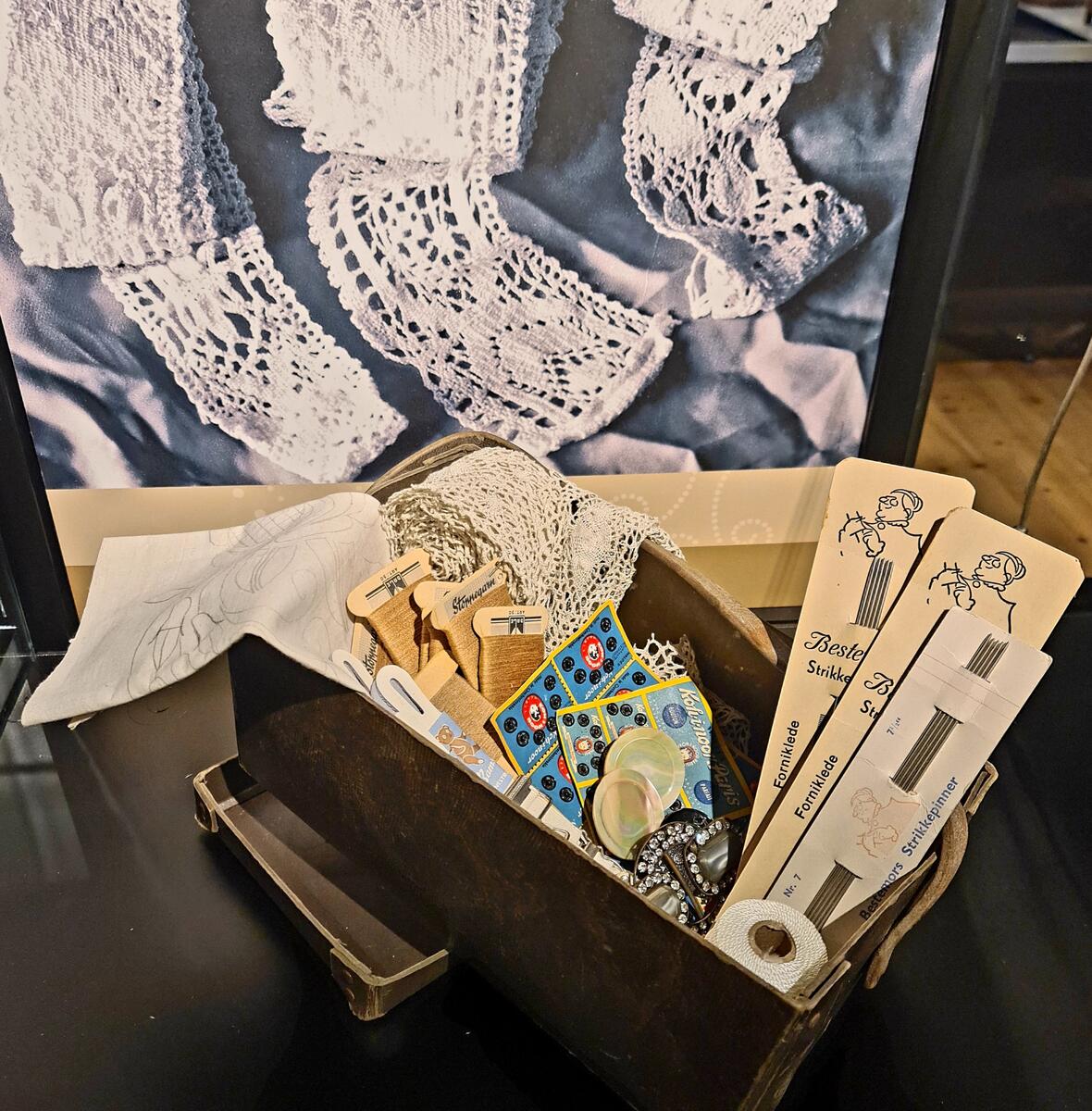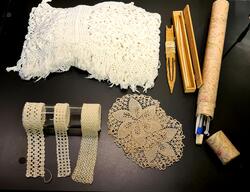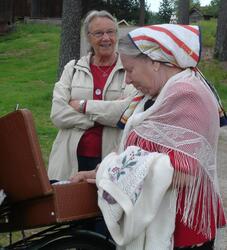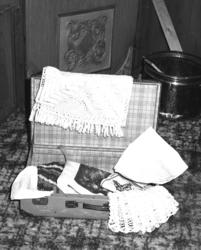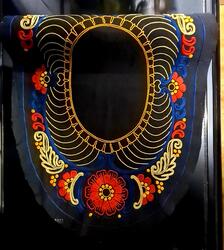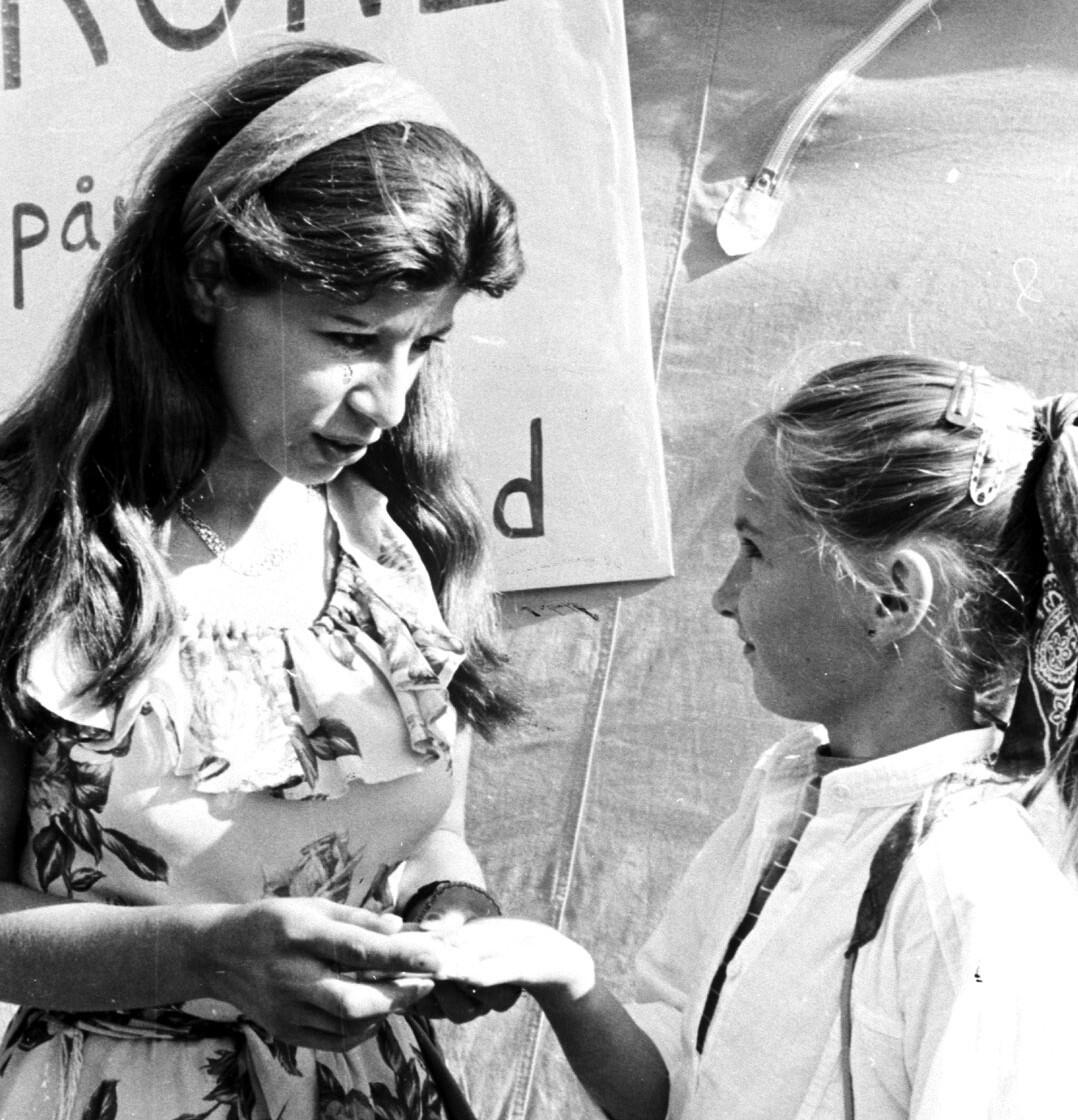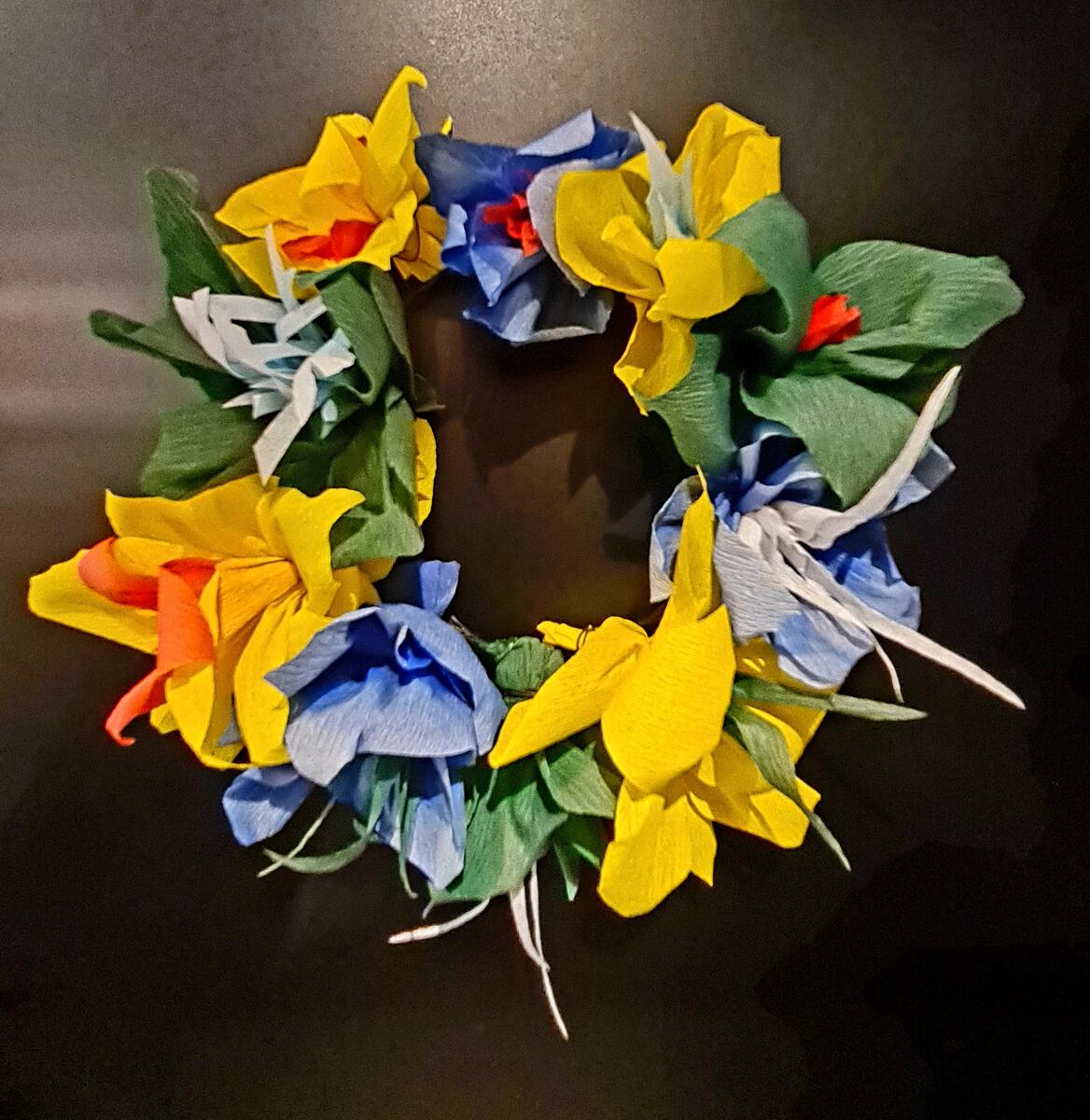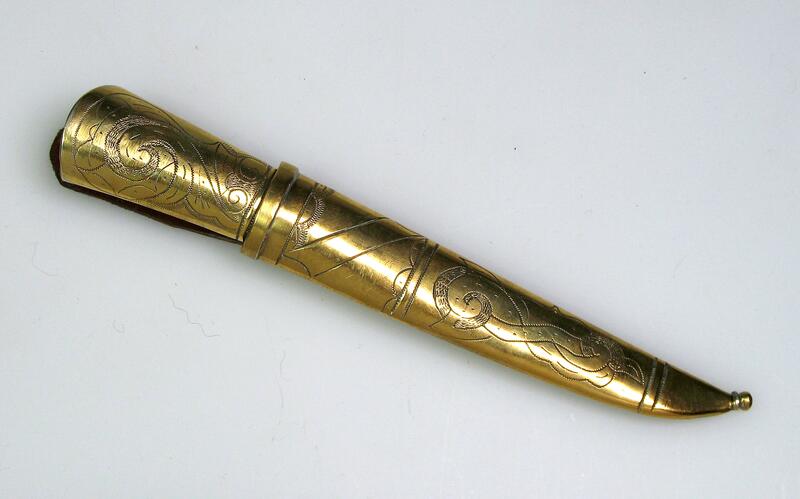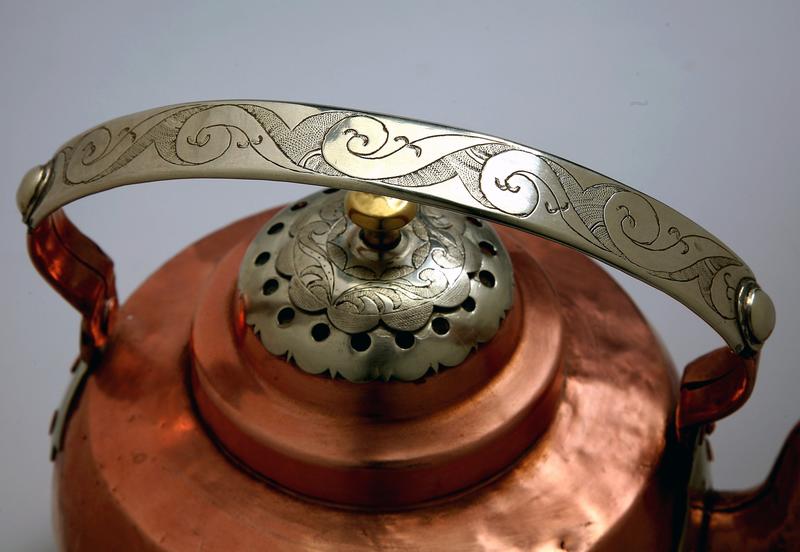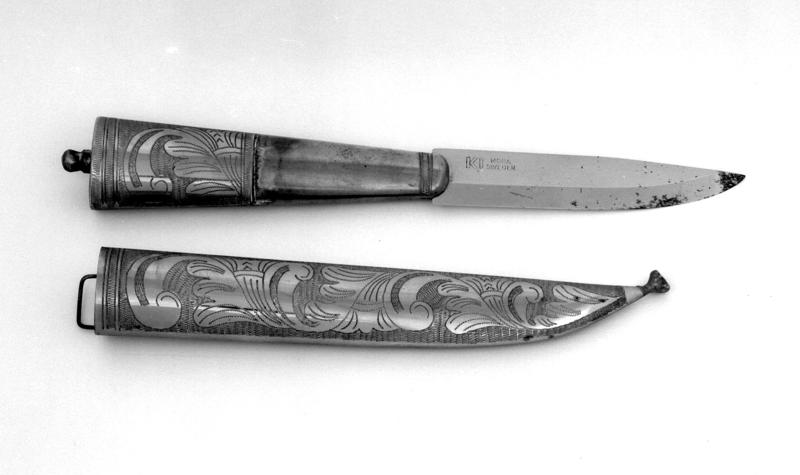She was responsible for carrying out traditional tasks such as child rearing, washing clothes and cooking. In addition, she sold self-made crafted goods, her husband's craft products and goods that were purchased wholesale. Moving from place to place with an entire family required close cooperation and an efficient division of labour. Men, women and children had to contribute to the family's livelihood and the children had important roles in everyday life.
Trading crafted goods
Trading usually took place from door to door or in the markets. The former was primarily the women’s task, with the children helping. The women used a trading suitcase for larger goods and a smaller suitcase called unika koffert for small goods.
The women's crafted goods included textile work (crocheted, knitted and woven items) and paper flowers. The items for sale could be knitwear such as socks, mittens, stockings, jackets and jerseys. They used a special weaving technique called flamming for making ribbons in bright colours that were used as garters or belts.
Crocheted doilies, runners and tablecloths were also common sales items. Normally, the women swapped wool or yarn at the farms. The women also helped produce and sell raddles while there was a market for them. Before mass production of raddles began, the women made them. The women also made products such as flatbread baskets and decorative straw items. The women collected down for duvets, and some made duvets for sale. Women who travelled without men would also do men's work. Many traded horses (Schluter 1993).
-
Box of craftmanship items. Foto: Anno Glomdalsmuseet
Trading in wholesale goods and work on the farms
The women also traded goods that were purchased from wholesalers. This became commonplace in the early twentieth century. The items they sold could be trinkets such as tablecloths, placemats, embroidery, lacework, lace, ribbons and handkerchiefs. They also sold utility articles such as needles, buttons, knitting needles and bobbins.
Women, like the men, would undertake farm work. They also carried out different types of housework in the homes where they stayed for any length of time. The housework was usually done in exchange for food and lodging.
- 1/5
Ragna Gustavsen’s crocheting. She sold her wares according to orders received. Foto: Anno Glomdalsmuseet - 2/5
Lacework and crochet. Coasters and tablecloths from the Latjo Drom exhibition. Foto: Anno Glomdalsmuseet - 3/5
Anna Gustavsen trading at an arrangement at the Glomdal Museum in 2007. Foto: Anno Glomdalsmuseet - 4/5
Suitcase with tablecloths and crocheting the Romani/Traveler women sold Foto: Anno Glomdalsmuseet - 5/5
Fargerik brodert duk. Foto: Anno Glomdalsmuseet
-
Fortuneteller, 1982. Foto: Nils Torske/ Anno Glomdalsmuseet
Divination
The women told fortunes from palms, with tarot cards, and in coffee grounds. Divination was often a combination of superstition and psychology. The Romani women were good listeners and customers would often get advice regarding love and fortune. Many women were knowledgeable about diseases in humans and animals and could heal with the help of herbs and plants.
-
Paper flowers. Foto: Anno Glomdalsmuseet
Paper flowers
Paper flowers were popular before plastic flowers came onto the market. They were especially popular for Christmas. Sometimes the women waxed the flowers to make them look more natural. All they needed to make paper flowers was crêpe paper and pipe cleaners.
These days, making paper flowers has become popular during the Romani people’s activity days and gatherings.
